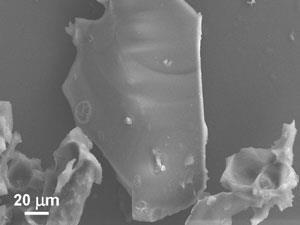Researchers in China have used human hair to make a vital component of energy-storage devices. The discovery could lead to more efficient and environmentally-friendly replacements for traditional batteries.

Many batteries currently in use, such as the lead–acid batteries in cars, are heavy and bulky and rely on hazardous chemicals to store electrical charge. With increasing worldwide sales of mobile electronics, the environmental impact of batteries is receiving more attention and motivating research into supercapacitors, which can be made from sustainable carbon-based materials.
Unfortunately, these carbon materials are usually either difficult to manufacture or derived from fossil fuels. Now, however, Feng Yan and his team at Soochow University have used a simple carbonisation process to turn human hair – a common and renewable waste product – into carbon flakes suitable for use in supercapacitor electrodes.

Human hair has several advantages as a starting material; as well as being cheap and plentiful it naturally contains nitrogen and sulfur, which are retained in the carbon flakes and increase the conductivity of the material. The fibrous arrangement of the proteins which make up human hair also gives the carbon flakes an unusual structure with a high surface area, to create a supercapacitor that can be charged very quickly. ‘They could act as a power supply that not only charges your devices faster, but also gives those devices a charge that lasts for a longer period of time,’ says Yan.
Adam Lee of the University of Warwick in the UK, an expert in nanomaterials and green chemistry, says the findings are very interesting. ‘This type of material is often used as an absorbent but rarely in electrical applications. However, as with all bio-derived materials an important question will be whether a sufficient supply of hair is available for viable commercial use, and at a purity which ensures a reproducible product’.
The team are now examining if their new material can also be used in conventional lithium-ion batteries.






No comments yet